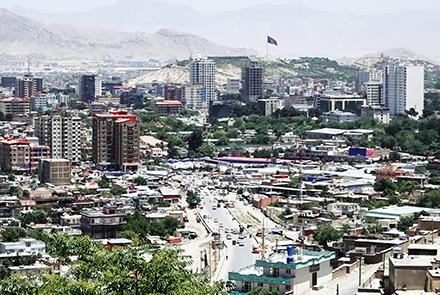Turkey announced on April 21st that it will be delaying the Istanbul summit, a development many people expected anyway. Still, the Afghan people are anxious and hold their breath. They do so because of the difficulty of predicting the future of the country. Although future predictions are never an exact science, they become a necessity during desperate times. Most Afghans do so to prepare contingency plans.
Some Afghans are trying to find their place in the coming political order and to gain favor with those who will be in power, others prepare for a civil war, still others prepare to flee. Any decent attempt at predicting the future of Afghanistan requires a clear understanding of its current trajectory because the future is made of the same stuff as the present.
It is easy to level the blame of the summit’s delay on the failure of the US administration and its international partners to negotiate a Taliban acceptance of the new troop withdrawal timeline. However, truth be told, the republic side was never ready for the summit. The High Council for Peace and Reconciliation has failed to produce a unified proposal for peace based on the thirty-plus proposals it received from different political parties accross the country. The second stage of this preparation would have been the review and approval of President Ashraf Ghani of such a proposal, which would be a daunting task itself. President Ghani has already announced his own proposal—including early elections--which means any proposal prepared by the council would have to compete with the president’s existing vision for the future.
One way to assess the future is to evaluate the current level of unity and cohesiveness of both sides of the conflict.
There exists a narrative that claims that the Taliban are a fragmented movement, a narrative that is often propagated by the government of Afghanistan to show the futility of negotiating with the movement. The thesis there is that the movement would not be able to completely disarm or reintegrate as there is no central command or control over the movement’s fighters in the country. The insurgency in Afghanistan has been termed a fluid insurgency by an expert on Afghanistan, Dr. Antonio Giustozzi, which means the fighters take the liberty of acting as contractors who perform operations for whomever aligns with them for that specific target or objective. This, however, does not mean that the Taliban cannot pull out their fighters following a settlement and dry out the well of recruitment for other movements and future insurgencies. We have seen the cohesion of the group through their ability to enact nationwide ceasefires in the past; it can also be seen in the lack of dissent being voiced from within their ranks.
The sad reality is that the Afghan elites on this side of the conflict are much more conflicted and divided. So much so that in any future political order we would always have a cohesive and unified Taliban stance against multiple divided stances from the republic side, which would mean that a future political order agreed upon in the intra-Afghan talks would be heavily dictated by the Taliban vision--by virtue of it commanding a majority.
The last scenario that needs to be considered is one that the US administration has subtly been voicing. The remarks made by Jake Sullivan, the United States National security advisor, stating that the United States would not be responsible for what happens in Afghanistan after its withdrawal echoes the ambivalence shown by the US toward Iraq’s future when it withdrew in great part from there in 2011. This is not to say that the United States would not attempt to push the different Afghan sides to reach a political settlement. But if the status quo prevails and the elites on this side of the conflict do not form a consensus soon, then the US might give up on the project and withdraw regardless. Such an outcome would leave the republic open to parties that see violence as the only path to power and Afghanistan would, like multiple times before, witness a race to control Kabul at the cost of another civil war.
Obaidullah Baheer lectures on Peace and Conflict Resolution in the postgraduate program at Kardan University in Kabul, and has an MA in international relations from the University of New South Wales, Australia. He is an adviser at the National Development Corporation. Twitter: @ObaidullahBaheer
All are welcome to submit a fact-based piece to TOLOnews' Opinion page. The views expressed in the opinion pieces are not endorsed or necessarily shared by TOLOnews. Contributors are responsible for the accuracy of the information in an opinion piece, but if it is discovered that information is not factual, a correction will be added and noted.


